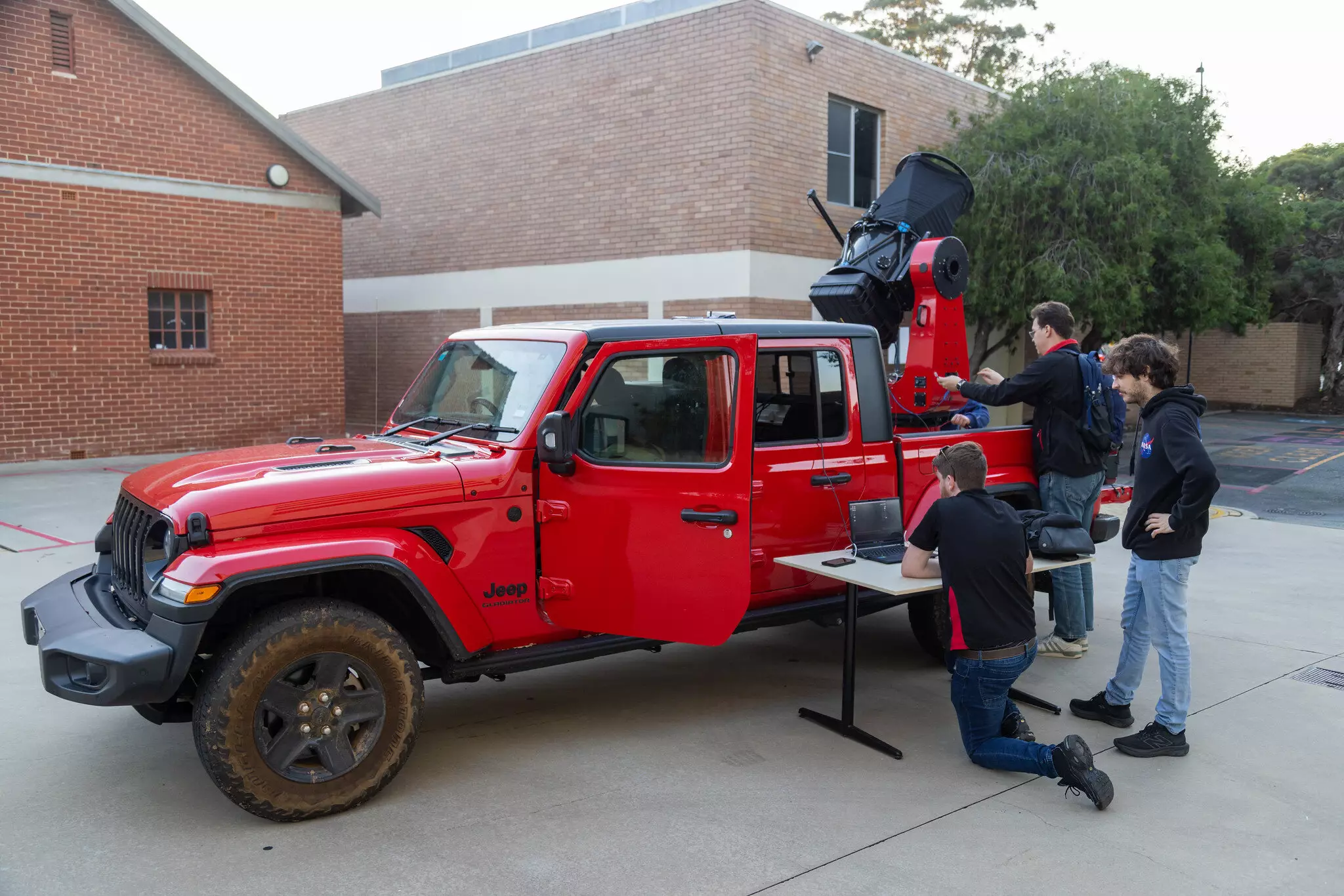The University of Western Australia’s TeraNet recently achieved a monumental breakthrough in space communication by successfully receiving laser signals from a German satellite in low Earth orbit. This accomplishment opens up possibilities for a 1,000-fold increase in communication bandwidth between space and Earth. Associate Professor Sascha Schediwy, leading the TeraNet team at the International Centre for Radio Astronomy Research (ICRAR) UWA node, oversaw the reception of laser signals from OSIRISv1, a laser communication payload from the German Aerospace Center (DLR), installed on the Flying Laptop satellite from the University of Stuttgart. This significant milestone serves as the foundational step toward establishing a next-generation space communications network in Western Australia.
The TeraNet ground stations utilize lasers, as opposed to traditional wireless radio signals, to transmit data between satellites in space and users on Earth. Laser technology holds the potential to transfer data at incredibly high speeds, reaching thousands of gigabits per second. The superiority of lasers in data transmission arises from their ability to operate at significantly higher frequencies than radio signals, enabling a more substantial amount of data to be packed into every second. While wireless radio technology has been the primary mode of communication from space since the launch of Sputnik 1 nearly 70 years ago, the increasing number of satellites generating vast amounts of data has created a bottleneck in transmitting this data back to Earth. Laser communication emerges as the ideal solution to this challenge, although it is susceptible to disruptions from clouds and rain.
Overcoming Challenges with a Ground Station Network
To address interruptions in laser signals due to weather conditions, the TeraNet team is establishing a network of three ground stations across Western Australia. This network includes two fixed ground stations and a mobile ground station mounted on a custom-built Jeep truck. The strategic placement of these stations ensures that even if one site experiences cloudy weather, the satellite can swiftly redirect its data transfer to a different location with clearer skies. Moreover, the mobile ground station’s agility allows for rapid deployment to areas requiring fast space communications, such as remote communities impacted by natural disasters.
High-speed laser communication from space has the potential to revolutionize data transfer for Earth observation satellites, enhance military communication networks, and bolster secure remote operations in various sectors, including autonomous mining and national disaster planning. The capabilities of TeraNet extend to supporting international space missions operating between low Earth orbit and the moon. The network integrates conventional optical communication standards with advanced technologies like deep-space communication, ultra-high-speed coherent communications, quantum-secured communications, and optical positioning and timing. With ground stations located at UWA, the Mingenew Space Precinct, and the European Space Agency’s New Norcia facility, TeraNet is poised to lead the way in revolutionizing space communication.


Leave a Reply